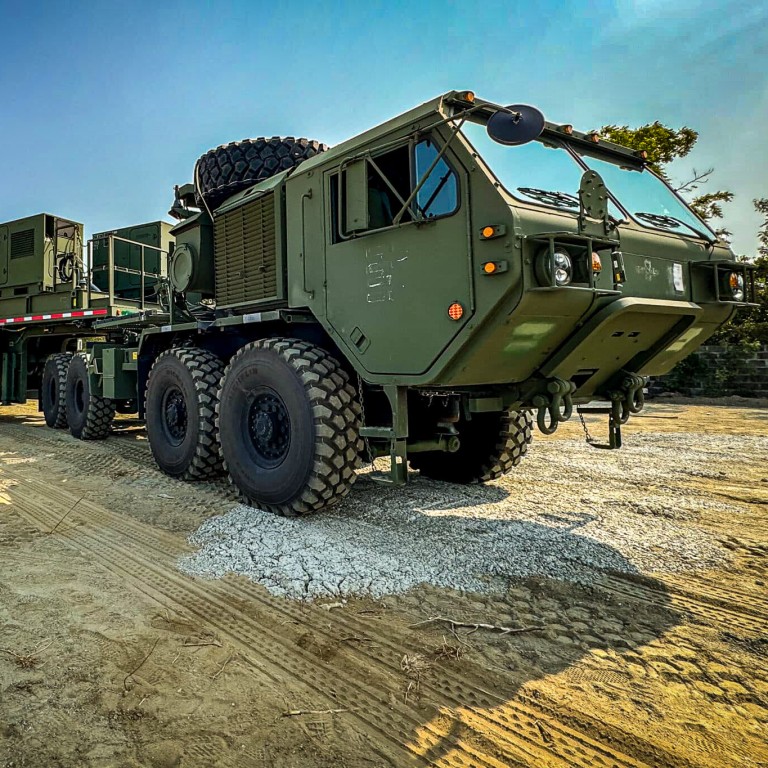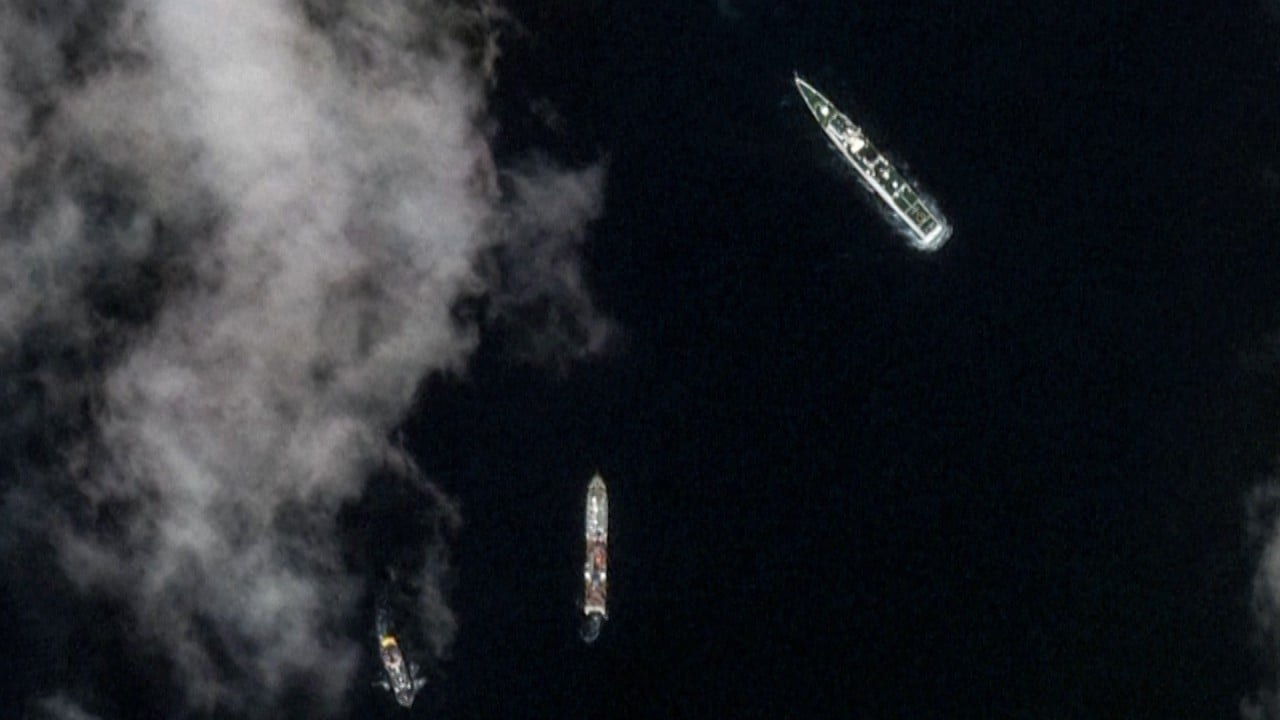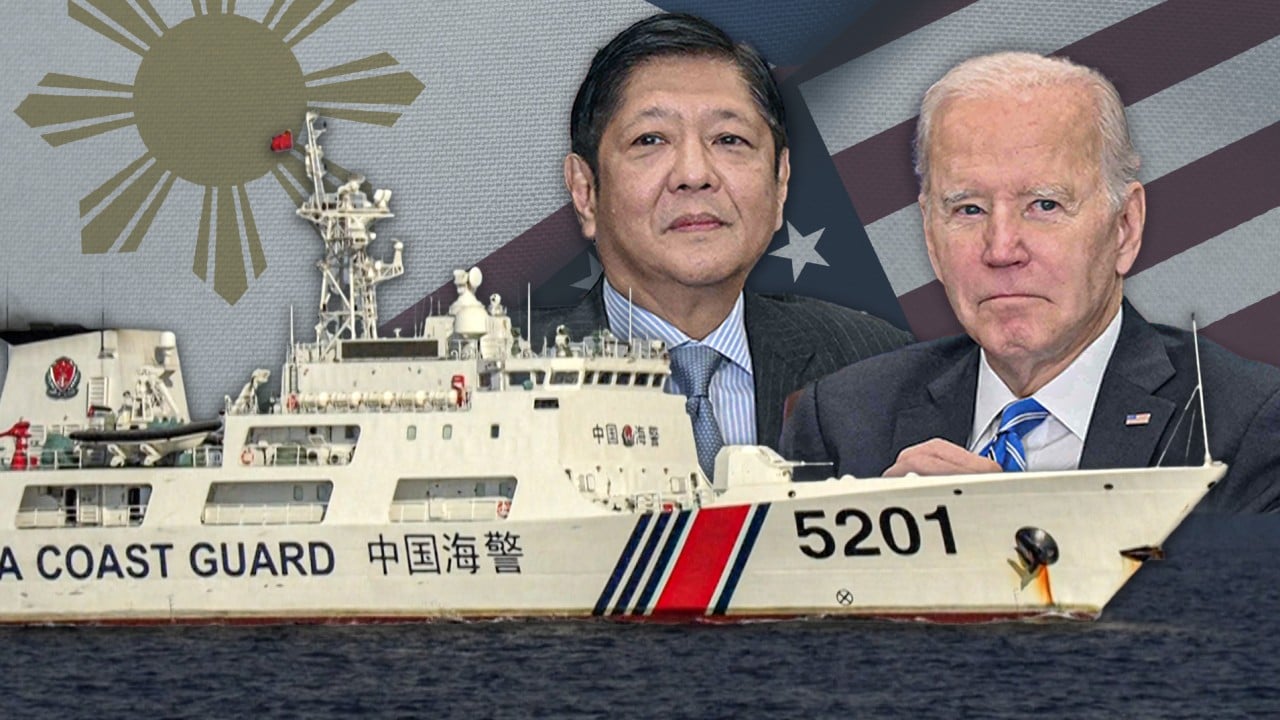
South China Sea: will Beijing ramp up militarisation after US missile system deployed in the Philippines?
- Mid-range launcher is ‘powerful weapon’ capable of striking mainland China, analysts say
- ‘Growing threat’ from US could justify even more PLA forces in disputed waters, expert says
The MRC is a land-based, ground-launched system that improves the military’s multi-domain capability. The launcher can fire the Standard Missile 6 (SM-6) and the Tomahawk Land Attack Missile (TLAM), with operational ranges of more than 240km (150 miles) and 2,500km, respectively.
Philippines, US, Japan to boost cooperation to deter Beijing in South China Sea
It is the first time that such a weapon system has been deployed in the Asia-Pacific region since the 1987 US-Soviet Union Intermediate-Range Nuclear Forces (INF) Treaty prohibited the development and possession of land-based missiles ranging from 500km to 5,500km.
Washington began developing new intermediate-range missiles after it withdrew from the INF Treaty in 2019, citing Moscow’s alleged violations of the agreement, and amid China’s increasing military activity in the Indo-Pacific region, most notably the expansion of its missile forces, according to a Pentagon report.
The Chinese foreign ministry said on Thursday that it “firmly opposed” the deployment of the MRC weapons system in the Philippines, and urged the US to “earnestly respect the security concerns of other countries”.
“[The country] should not sacrifice its own security interests to draw chestnuts from the fire for the US, and should not go further down the wrong path.”
Collin Koh, a senior fellow at the S. Rajaratnam School of International Studies in Singapore, said it was “surprising” to see the first Asia-Pacific deployment of the MRC in the Philippines instead of in another US ally such as Japan.
“The location itself is somewhat very strategic, and it covers both potential Taiwan Strait contingency, and, of course, the South China Sea contingency.”
Koh said the administration of Philippine President Ferdinand Marcos Jnr would not push for a permanent deployment of the MRC system, as it was wary of further provoking Beijing. However, there would not be any near-term rollback in tensions in the South China Sea , and China could ramp up its presence in the disputed waterway as a response to the US missile system.
“Hawks within Beijing will justify using this mid-range capability deployment to say that, because they face a growing threat from the US, they will have to search for even more forces in the South China Sea to counter the threat,” Koh said.
“We have to consider the likelihood of China deploying more offensive capabilities on those artificial islands as well … There is the potential likelihood of this US deployment prompting China to further militarise the South China Sea.”
Timothy Heath, a senior international defence researcher at the Rand Corporation, said the MRC system was capable of targeting aircraft and ships, increasing the threat to Chinese aircraft and ships operating in the Spratly Islands in the South China Sea.
If any conflict broke out between China and the Philippines, the deployment of the mid-range-capable missile would give the US military a “powerful weapon to assist” Philippine forces and serve as a deterrent for any regional war, he said.
“It could be used to retaliate against PLA [People’s Liberation Army] rocket forces that launch missiles against the Philippines,” Heath said.
“Deployment of the mid-range missile raises the possibility that US forces based in the Philippines could respond to Chinese missile strikes on the Philippines by launching retaliatory missile strikes against China’s mainland.”
Zachary Abuza, a professor at the National War College in Washington, who specialises in Southeast Asia, said that while the deployment of the MRC system would not be a “game changer” in the region, it was a factor that the PLA planners now had to consider.
US, Chinese defence chiefs talk for first time in more than 2 years
“It is mobile, making it very hard to hit, and it is one more thing that Chinese forces would both have to defend against and use their own missiles in a counterstrike,” Abuza said.
The deployment of the MRC in the Philippines was also followed by the first video call between US Secretary of Defence Lloyd Austin and China’s defence minister, Admiral Dong Jun, on Tuesday.
During the meeting, Austin said again that the US would “continue to fly, sail and operate safely and responsibly, wherever international law allows”, in the South China Sea.
Shaan Shaikh, deputy director and fellow at the Missile Defence Project at the Washington-based Centre for Strategic and International Studies, said: “Beijing’s claims over the South China Sea and common skirmishes with Filipino sailors and fishermen have reinforced Manila’s relationship with the United States.
“US allies in the Indo-Pacific constitute the United States’ greatest advantage over China. That’s not just something American officials say to sound nice – these relationships have real military implications, as we see here.”



